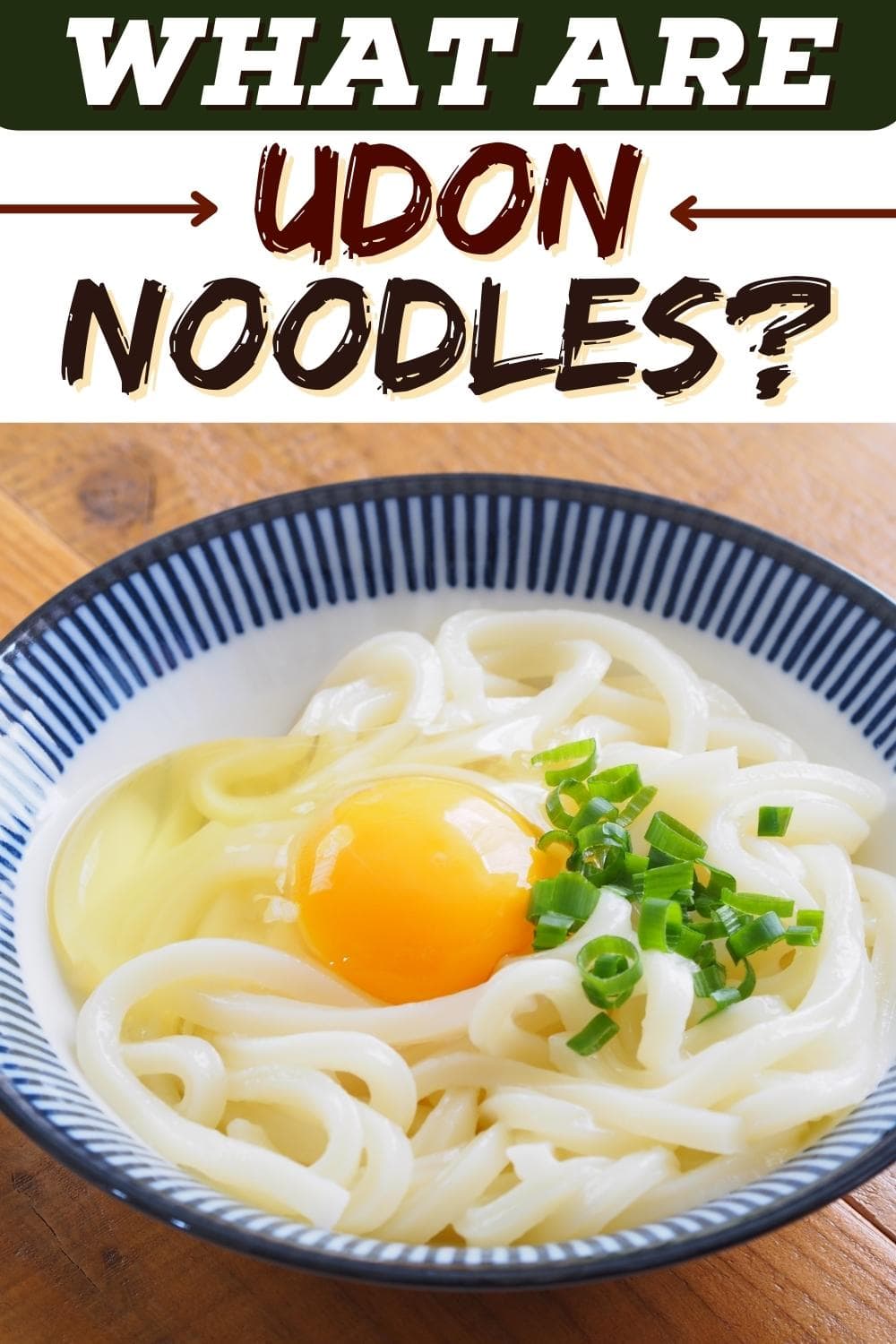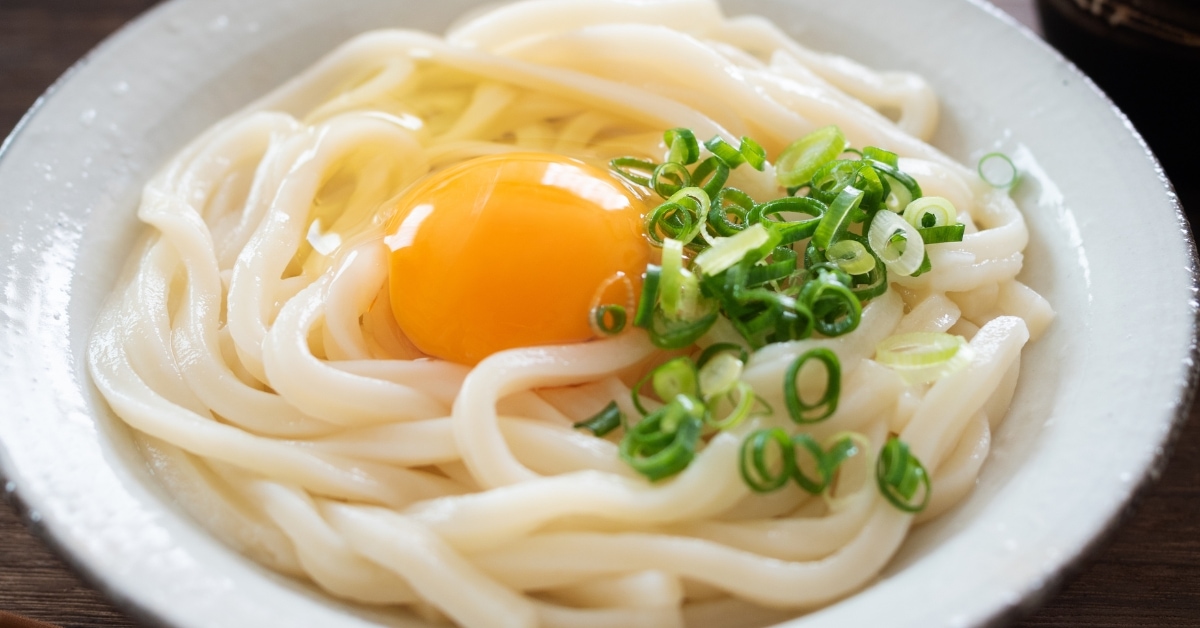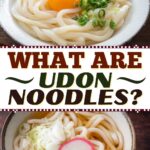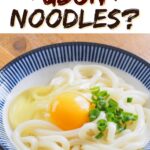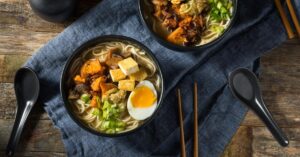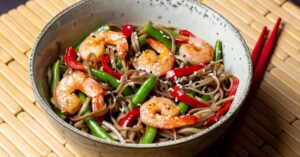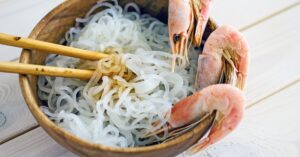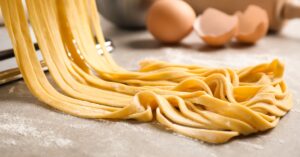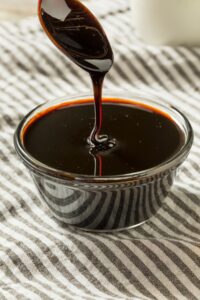What are udon noodles? And why are they so popular?
With Asian noodles, you have many options. Ramen, vermicelli, and chow mein are just some. But what makes udon noodles different from the rest?
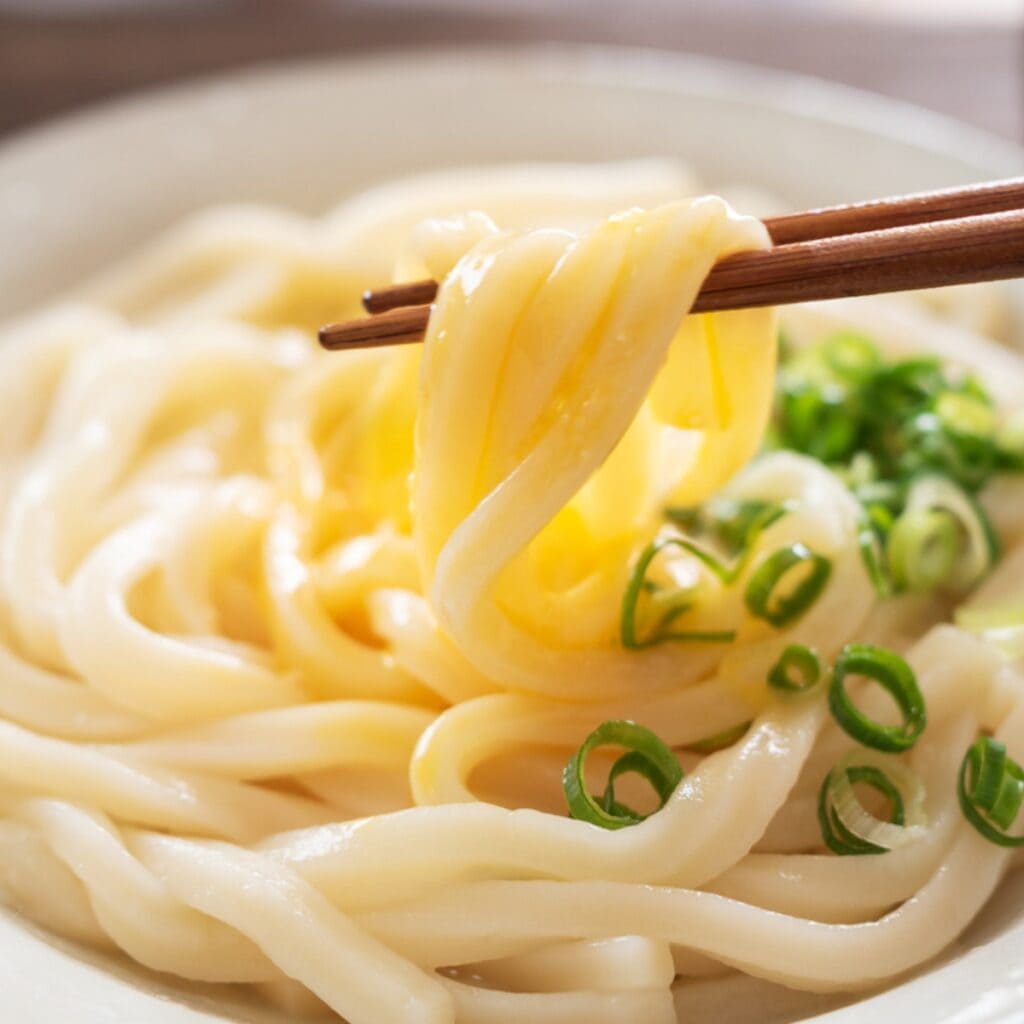
Udon noodles are those sturdy, chewy delights. They are a staple in Japan and gaining popularity worldwide.
Like many other noodles, they’re oh-so-comforting. There is something about them, though, that is extra slurp-worthy.
So grab your chopsticks and get ready to explore the world of udon.
What Are Udon Noodles?
Udon noodles are a type of mildly-flavored Japanese noodle. They are a staple ingredient most commonly used in soups.
Traditionally, udon noodles are made with wheat flour, water, and salt. Some regions make them with potato starch or carrot.
Udon noodles are also thick, but their shape can vary. Sometimes they’re round, square, or even flat like a ribbon.
Despite the shape, they all have one thing in common… the most heavenly chewy texture. Put them in a brothy soup, and you will see what I mean.
Thanks to their neutral flavor, they’re versatile too.
Most of the time, you’ll find them sold dried or fresh at the market. You can also find some in frozen meals and soup packages.
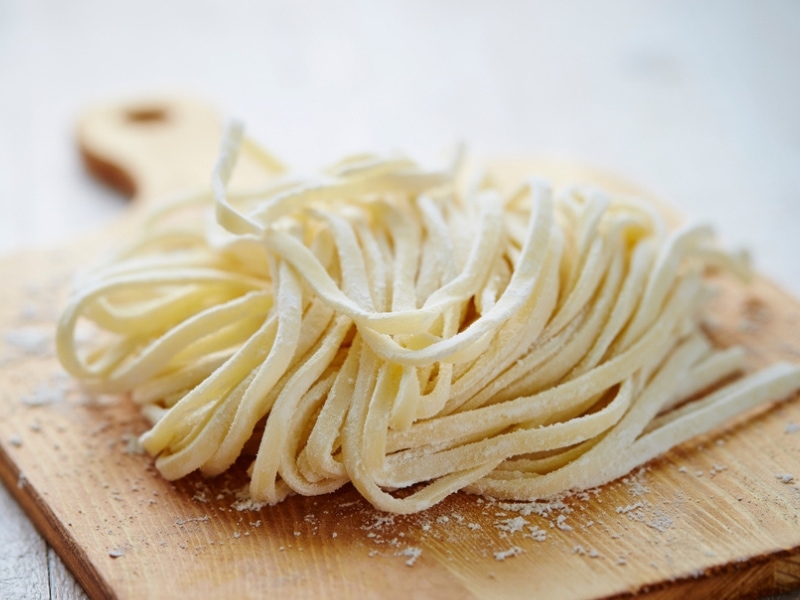
Where Did Udon Noodles Originate?
Udon noodles have been around for a long, long time.
Like many foods, the origin is not crystal clear. The common belief is that udon noodles came from China.
During the Tang dynasty, they found their way to Japan.
Udon noodles back then weren’t exactly like what we have today. Instead, they were more likely square-like dumplings.
Until the 17th century, udon noodles were homemade. During that time, they became a commodity you could buy from vendors.
Nowadays, you can find udon noodles everywhere.
Just swing by the supermarket and peruse the Asian food section. I have a good hunch you’ll find them there.
Udon vs. Soba Noodles (What’s the Difference?)
It’s easy to get udon and soba noodles mixed up.
Both are popular Japanese noodles. And both are equally slurp-able!
However, these are two different noodles.
The easiest way to tell them apart is by color and thickness.
Soba noodles are made from buckwheat flour. They are darker in color, with a nuttier flavor and thinner texture.
Udon noodles are thick, white, and have a mild flavor. Although, the color can vary depending on the type.
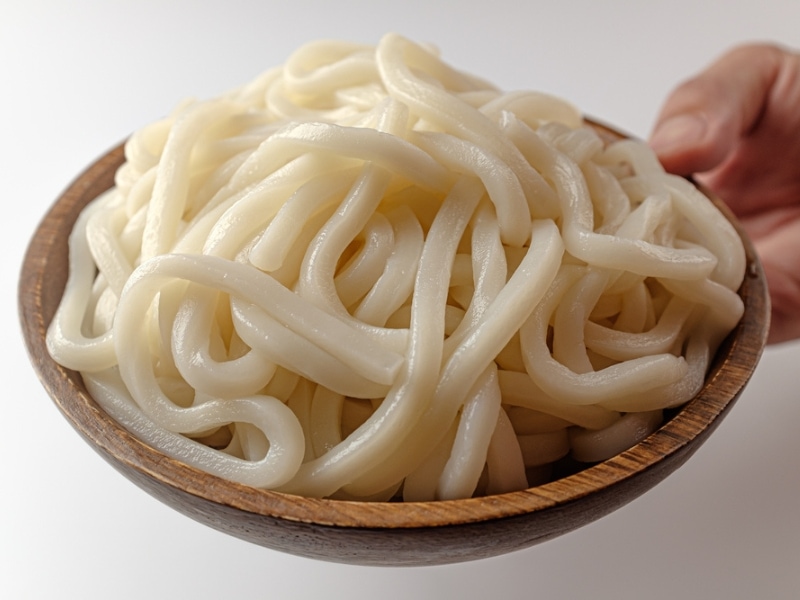
Varieties of Udon Noodles
When shopping for udon noodles, you’ll come across three main types. This is what you need to know about each one:
- Dried Udon-These are often thinner than fresh udon noodles. So the texture will be less chewy. Plop them in boiling water and cook according to the package.
- These are fantastic in soups, stir-fries, and salads.
- Fresh Udon- Opt for fresh noodles for the chewiest texture. Fresh udon noodles are the thickest. They cook fast and are fantastic in soup.
- They also taste amazing on their own, with a little sauce.
- Whole Wheat Udon- As the name suggests, this udon is made with whole wheat flour. They’re just as fabulous as regular white wheat udon. The difference is: this udon offers more nutrients and will keep you satiated longer.
How Are Udon Noodles Typically Served?
Hot and cold, udon noodles are mouthwatering any way you serve them.
- Most often, you’ll find them in soups.
- But they are also tasty when dipped in a sauce or tossed in a salad.
- You can also use them in cold noodle dishes and stir-fries.
If you want to try popular Japanese udon recipes, you have tons of options.
- Kake udon is a favorite and an absolute must. It’s a traditional Japanese soup featuring udon in a simple broth.
- For something with a punch, try curry udon. The chewy noodles soak up the rich broth.
- Miso nikomi udon is great for something hearty. The miso broth with the noodles and add-ins is very filling.
- If you’re craving stir-fry, go with yaki udon. It’s a quick meal pack with udon, veggies, and sometimes meat.
- Or if you want something cold, try zaru udon. The cold udon noodles come with an umami dipping sauce.
Whatever you make, these dishes are sure to hit the spot!
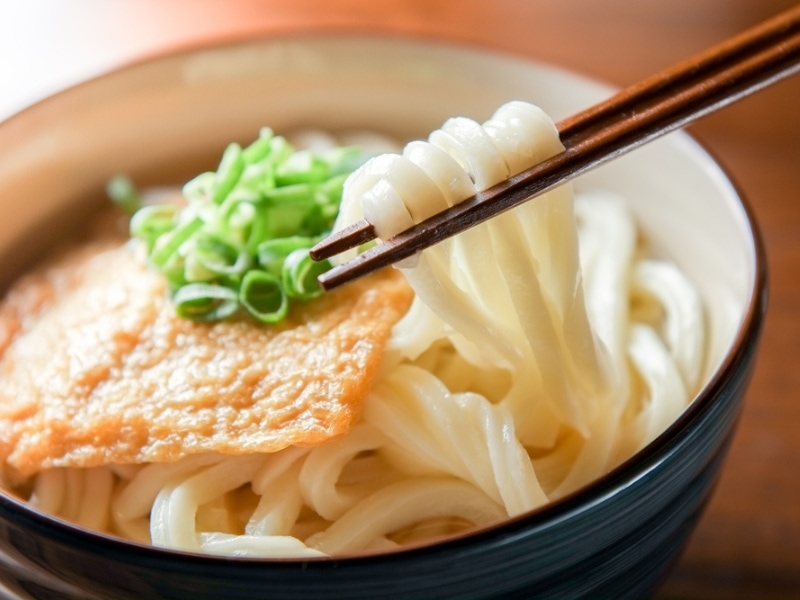
How to Cook Udon Noodles
Cooking udon noodles is easy. However, consider which type you plan to use.
- Cook dried udon noodles by adding them to a pot of boiling water. Depending on the brand, they take about 6 to 12 minutes.
- You don’t want to overcook them. Otherwise, they turn mushy. But undercooking means they’ll be hard.
- For fresh noodles, simmer them in a bath of hot water. Depending on the thickness, they take about 5 to 10 minutes.
- A telltale sign they’re ready is they’ll float.
Fresh or dried, the important part is using enough water. Otherwise, some noodles can stick to the pot.
Now that you know all about udon, what will you make?
